
350-701: Implementing and Operating Cisco Security Core Technologies
PDFs and exam guides are not so efficient, right? Prepare for your Cisco examination with our training course. The 350-701 course contains a complete batch of videos that will provide you with profound and thorough knowledge related to Cisco certification exam. Pass the Cisco 350-701 test with flying colors.

Curriculum for 350-701 Certification Video Course
| Name of Video | Time |
|---|---|
 1. Cisco Certification Updates - FEB 2020 |
11:00 |
 2. Cisco Re-Certifications |
1:00 |
 3. CCNP Certifications |
1:00 |
 4. CCIE Certifications |
2:00 |
 5. Cisco Certification Migration Options |
6:00 |
 6. CCNP Required Exams |
3:00 |
| Name of Video | Time |
|---|---|
 1. CCNP Security Certifications |
7:00 |
 2. CCNP SCOR - 350-701 |
1:00 |
 3. SCOR 350-701 Contents |
7:00 |
| Name of Video | Time |
|---|---|
 1. Network Security Terminology |
6:00 |
 2. Goals of Network Security |
10:00 |
 3. Threat Types - Mitigation |
9:00 |
 4. Assets - Classification of Assets |
6:00 |
 5. Classify Counter Measures |
4:00 |
 6. Classify Vulnerabilities |
2:00 |
 7. Network Security - Design Principles |
10:00 |
| Name of Video | Time |
|---|---|
 1. Motivations behind Network Attacks |
3:00 |
 2. Social Engineering Attacks |
4:00 |
 3. Phishing Attacks |
4:00 |
 4. Social Engineering Attacks |
4:00 |
 5. Denial of Service Attacks - DoS |
5:00 |
 6. Distributed Denial of Service Attakcs - DDoS |
4:00 |
 7. Spoofing Attacks |
4:00 |
 8. Spoofing Attacks - Mitigation |
4:00 |
 9. Man in the Middle Attacks -MiTM |
2:00 |
 10. Password Attacks |
5:00 |
 11. Password Attacks - Mitigation |
4:00 |
 12. Reflector Attacks |
2:00 |
 13. Amplification Attacks |
2:00 |
 14. Reconnaissance Attacks |
5:00 |
 15. Reconnaissance Attacks - Mitigation |
2:00 |
| Name of Video | Time |
|---|---|
 1. Malicious Codes - VIRUS |
2:00 |
 2. Malicious Codes - WORMS |
1:00 |
 3. Malicious Codes - TROJAN HORSES |
1:00 |
 4. Hacking |
1:00 |
 5. Hackers - Script Kiddies |
1:00 |
 6. Malware Service - DARKNET |
1:00 |
| Name of Video | Time |
|---|---|
 1. AAA - Network Security |
11:00 |
 2. Cisco Telemetry Services |
4:00 |
 3. Firewall |
8:00 |
 4. Intrusion Prevention System - IPS |
4:00 |
 5. Virtual Private Networks |
4:00 |
 6. Next Generation Firewalls |
6:00 |
| Name of Video | Time |
|---|---|
 1. Cisco Lab Options |
8:00 |
 2. About GNS3 |
4:00 |
 3. Installing GNS3 - Windows |
7:00 |
 4. GNS3 - IOS Images |
6:00 |
 5. Default Topology - GNS3 - IOS initial Configs |
5:00 |
 6. IOS Default Topology |
9:00 |
 7. GNS3 Topology-HOST Computer |
6:00 |
 8. GNS3 - VMware Setup |
9:00 |
 9. GNS3 - IOSv L2-L3 |
6:00 |
 10. GNS3 - ASAv Setup |
4:00 |
 11. GNS3 - IOU-L2-L3 |
3:00 |
| Name of Video | Time |
|---|---|
 1. Network Infrastructure Protection |
5:00 |
 2. Identify Network Device Planes |
2:00 |
 3. Data Plane |
6:00 |
 4. Control Plane |
3:00 |
 5. Management Plane |
3:00 |
| Name of Video | Time |
|---|---|
 1. Inband Vs OutBand Management |
7:00 |
 2. Remote Access - TELNET |
6:00 |
 3. Remote Access - SSH |
9:00 |
| Name of Video | Time |
|---|---|
 1. Cisco Telemetry Services |
4:00 |
 2. Device- Network Events Logging |
10:00 |
 3. Syslog - Terminal Logging |
7:00 |
 4. Network Time Protocol |
7:00 |
 5. NTP Stratum Value |
4:00 |
 6. NTP Configuration - LAB |
9:00 |
| Name of Video | Time |
|---|---|
 1. Control Plane Security - Possible Threats |
9:00 |
 2. Routing Protocol Authentication |
12:00 |
 3. Control Plane Policing - CoPP |
7:00 |
 4. Class-Map - Policy Map - Hierarchy |
5:00 |
 5. CoPP - Configuration Examples |
12:00 |
| Name of Video | Time |
|---|---|
 1. Switch Security - Overview |
2:00 |
 2. Disable Unused Ports |
1:00 |
 3. Dynamic Trunking Protocol - DTP |
8:00 |
 4. DTP Vulnerabilities - Mitigation |
2:00 |
 5. VLAN Hopping Attacks - Mitigation |
5:00 |
 6. Cisco Discovery Protocol - CDP |
18:00 |
 7. Link Layer Discovery Protocol - LLDP |
3:00 |
 8. CDP- LLDP Vulnerabilities - Mitigation |
2:00 |
| Name of Video | Time |
|---|---|
 1. MAC Flooding Attack - Port Security |
12:00 |
 2. MAC Spoofing Attack - Port Security |
7:00 |
 3. Port Security - Configuration |
11:00 |
 4. Spanning Tree Port Fast |
7:00 |
 5. Native VLAN |
8:00 |
 6. DHCP Spoofing Attack - DHCP Spoofing |
8:00 |
 7. DHCP Snooping - Configuration |
16:00 |
 8. DHCP Starvation Attack - Mitigation |
2:00 |
 9. ARP Spoofing Attack - DAI |
12:00 |
 10. Dynamic ARP Inspection - Configuration |
12:00 |
 11. Protected Ports- Private VLAN Edge |
3:00 |
 12. Private VLAN |
9:00 |
 13. Private VLAN - Configuration |
5:00 |
 14. Private VLAN - LAB |
20:00 |
| Name of Video | Time |
|---|---|
 1. What is Firewall |
8:00 |
 2. Statefull Packet Filtering |
8:00 |
 3. Stateless Packet Filtering |
4:00 |
 4. Application Level Gateways - Proxy Servers |
5:00 |
 5. Next Generation Firewalls |
6:00 |
 6. FIrewall Vendors in Market |
6:00 |
| Name of Video | Time |
|---|---|
 1. Cisco Statefull Firewalls - IOS - ASA |
3:00 |
 2. ASA Supported Features _ PART1 |
9:00 |
 3. ASA Supported Features _ PART2 |
11:00 |
 4. ASS Compare Models |
7:00 |
| Name of Video | Time |
|---|---|
 1. Manage Cisco CLI - ASA - GUI |
3:00 |
 2. Basic CLI Modes - Commands |
4:00 |
 3. ASA Security Levels |
10:00 |
 4. ASA Interface Configurations |
5:00 |
 5. ASA Security Policies - Default |
11:00 |
 6. ASA Routing |
5:00 |
| Name of Video | Time |
|---|---|
 1. ASA ACls - Overview |
9:00 |
 2. ASA ACLS - Basic Example |
7:00 |
 3. Traffic Between Same Security Levels |
3:00 |
 4. ACL Object Groups |
10:00 |
 5. ACL Object Groups - LAB |
12:00 |
| Name of Video | Time |
|---|---|
 1. PRivate IP - Public IP |
5:00 |
 2. What is NAT ? |
3:00 |
 3. NAT Types |
6:00 |
 4. Dynamic NAT - on ASA |
10:00 |
 5. Dynamic PAT- ASA |
5:00 |
 6. Dynamic PAT - with Exit interface |
5:00 |
 7. Dynamic NAT-PAT Combination |
2:00 |
 8. Static NAT - ASA |
12:00 |
 9. Static PAT- ASA |
11:00 |
| Name of Video | Time |
|---|---|
 1. IOS - Zone Based Firewall |
3:00 |
 2. ZBF - Configuration Overview |
4:00 |
 3. ZBF - Security Zones |
3:00 |
 4. ZBF - Default Flow |
3:00 |
 5. Class-Map - Policy Map - Hierarchy |
5:00 |
 6. ZBF - Classify Traffic using Class-Maps |
6:00 |
 7. ZBF- Class-map Configuration |
5:00 |
 8. ZBF - POlicy Map - Zone Pairs |
11:00 |
| Name of Video | Time |
|---|---|
 1. What is Cryptography |
3:00 |
 2. Goals of Cryptography |
3:00 |
 3. Hashing-How it Works |
3:00 |
 4. Hashing with HMAC |
3:00 |
 5. What is Encryption - Decryption |
1:00 |
 6. Encryption Algorithms - Symmetric vs Assymetric |
5:00 |
 7. Cryptanalysis - Attacks |
4:00 |
 8. Asymmetric Encryption - Drawbacks |
3:00 |
 9. Public Key Infrastructure - PKI |
4:00 |
| Name of Video | Time |
|---|---|
 1. Virutal Private Network - Introduction |
5:00 |
 2. VPN Types - Site to Site / Remote Access |
4:00 |
 3. VPN Logical Topologies |
1:00 |
 4. VPN Default Lab Setup - Routers |
5:00 |
| Name of Video | Time |
|---|---|
 1. What is IPSec ? |
3:00 |
 2. IPsec Security Services |
7:00 |
 3. IPSec Modes - Tunnel vs Transport |
5:00 |
| Name of Video | Time |
|---|---|
 1. How IPsec VPN Works |
5:00 |
 2. Step-1 - Interesting Traffic |
3:00 |
 3. Step-2 IKE Phase-1 |
8:00 |
 4. Step-3 - IKE Phase 2 |
9:00 |
 5. IKE Phase 2 - Configuration/ Verification |
7:00 |
| Name of Video | Time |
|---|---|
 1. Remote Access VPN |
3:00 |
 2. What is SSL-TLS |
3:00 |
 3. How SSL-TLS Works |
8:00 |
 4. What is SSL VPN |
4:00 |
 5. SSL VPN - Modes |
6:00 |
| Name of Video | Time |
|---|---|
 1. AAA - Network Security |
11:00 |
 2. AAA - Components |
4:00 |
 3. AAA Protocols - TACACS - RADIUS |
8:00 |
 4. AAA- Cisco Authentication Servers |
4:00 |
| Name of Video | Time |
|---|---|
 1. AAA Authentication - Device Access |
3:00 |
 2. Authentication Local database |
10:00 |
 3. AAA External Servers |
3:00 |
 4. Authentication - External server (TACACS) |
12:00 |
| Name of Video | Time |
|---|---|
 1. Authorization - Device Access |
3:00 |
 2. IOS Privilege Levels |
9:00 |
 3. Local Authorization using Privilege Levels |
14:00 |
 4. IOS Privilege Levels _ Limitations |
5:00 |
 5. Role based CLI Access - RBAC |
6:00 |
 6. RBAC Views - Types |
4:00 |
 7. RBAC Views - LAB1 |
10:00 |
 8. Modify RBAC Views - LAB 2 |
4:00 |
 9. Modify RBAC Views - LAB 3 |
6:00 |
 10. RBAC - Super Views |
5:00 |
| Name of Video | Time |
|---|---|
 1. Web Access - Possible Threats |
4:00 |
 2. Web Based Attacks- |
5:00 |
 3. Web Attack Examples |
10:00 |
 4. Web Security Solutions |
5:00 |
| Name of Video | Time |
|---|---|
 1. Cisco Web Security - WSA-CWS |
5:00 |
 2. What is WSA ? |
9:00 |
 3. WSA- HOw it Works |
5:00 |
 4. WSA Deployment Modes |
6:00 |
 5. WSA models - Physical -Virtual Appliance |
5:00 |
 6. WSA Licensing Options |
7:00 |
| Name of Video | Time |
|---|---|
 1. Email Based Threats |
2:00 |
 2. Cisco Email Security Appliance - ESA |
3:00 |
| Name of Video | Time |
|---|---|
 1. Intrusion Prevention System - IPS |
3:00 |
 2. IDS vs IPS |
2:00 |
 3. Host Based IPS vs Network Based IPS |
6:00 |
 4. IPS Deployment Modes - INline vs Promiscious |
3:00 |
 5. Cisco IPS Solutions |
5:00 |
 6. IPS Threat Detection Methods |
7:00 |
 7. IPS Signature Alarm Types |
3:00 |
 8. IPS Signature Actions |
3:00 |
 9. IPS Evasion Methods - CounterMeasures |
6:00 |
| Name of Video | Time |
|---|---|
 1. What is Network Management |
8:00 |
 2. Past-Present Methods of Network Mangement- PART 1 |
14:00 |
 3. Past-Present Methods of Network Mangement- PART 2 |
7:00 |
 4. SNMP- Simple Network Mangement Protocol |
18:00 |
| Name of Video | Time |
|---|---|
 1. Challenges - Traditional Management |
11:00 |
 2. Network Automation - Goals |
16:00 |
 3. Types of Network Automation |
6:00 |
 4. What can be Automated - PART 1 |
12:00 |
 5. What can be Automated - PART 2 |
9:00 |
 6. Impact of Network Automation |
8:00 |
| Name of Video | Time |
|---|---|
 1. Automation Origination Points |
8:00 |
 2. SDN - Software Defined Networking |
15:00 |
 3. SDN Controllers |
9:00 |
 4. Networks Managed by SDN Controllers |
13:00 |
| Name of Video | Time |
|---|---|
 1. Management Plane |
3:00 |
 2. SDN-Management Plane |
7:00 |
| Name of Video | Time |
|---|---|
 1. SDN - Imperative Model |
5:00 |
 2. SDN - Declarative Model |
7:00 |
 3. SDN - Network Design Requirments |
9:00 |
 4. UNderlaY Networks |
7:00 |
 5. Overlay Networks |
7:00 |
 6. SDN Fabric |
6:00 |
| Name of Video | Time |
|---|---|
 1. Application Programming Interface - API |
11:00 |
 2. API Types |
4:00 |
 3. API - With SDN Networks |
9:00 |
 4. NorthBound API |
9:00 |
 5. SouthBound API |
8:00 |
| Name of Video | Time |
|---|---|
 1. Cisco DevNet |
5:00 |
 2. DevNet Certifications |
5:00 |
 3. DevNet Sandbox |
6:00 |
 4. DevNet Sandbox LABS |
8:00 |
 5. Sandbox LAB Access - Reservations |
3:00 |
| Name of Video | Time |
|---|---|
 1. Cisco DNA Center |
16:00 |
 2. DNA Center Appliance |
4:00 |
 3. DNA Center- What can do - PART 1 |
11:00 |
 4. DNA Center- What can do - PART 2 |
13:00 |
| Name of Video | Time |
|---|---|
 1. Web Service API |
8:00 |
 2. Web Service API - Commonly Used |
8:00 |
 3. REST API |
8:00 |
| Name of Video | Time |
|---|---|
 1. Config Management Tools |
6:00 |
 2. Config Management Tools - Capabilities |
9:00 |
 3. Master-Agent |
6:00 |
 4. Agent Based vs Agentless |
7:00 |
 5. Push-Pull Model |
10:00 |
 6. Configuration Files |
5:00 |
| Name of Video | Time |
|---|---|
 1. PUPPET - Config MGMT Tool |
3:00 |
 2. PUPPET-Master Agent Database |
3:00 |
 3. PUPPET - Manifest |
5:00 |
 4. PUPPET-Module-Forge |
6:00 |
 5. PUPPET-Agent- Agentless |
3:00 |
 6. PUPPET-PULL Model Steps |
4:00 |
| Name of Video | Time |
|---|---|
 1. CHEF- Config MGMT Tool |
6:00 |
 2. CHEF- Terminology |
7:00 |
| Name of Video | Time |
|---|---|
 1. ANSIBLE- COnfig MGMT Tool |
8:00 |
 2. ANSIBLE- Control Station |
3:00 |
 3. ANSIBLE- PlayBook-Inventory |
5:00 |
 4. ANSIBLE- Templates-Variables |
7:00 |
| Name of Video | Time |
|---|---|
 1. API Data Formats |
8:00 |
 2. JSON Overview |
8:00 |
 3. JSON Data Types |
7:00 |
 4. JSON Syntax Rules |
3:00 |
 5. JSON Data Interpretation |
7:00 |
Cisco SCOR 350-701 Exam Dumps, Practice Test Questions
100% Latest & Updated Cisco SCOR 350-701 Practice Test Questions, Exam Dumps & Verified Answers!
30 Days Free Updates, Instant Download!
350-701 Premium Bundle

- Premium File: 647 Questions & Answers. Last update: Dec 15, 2025
- Training Course: 299 Video Lectures
- Study Guide: 701 Pages
- Latest Questions
- 100% Accurate Answers
- Fast Exam Updates
Cisco 350-701 Training Course
Want verified and proven knowledge for Implementing and Operating Cisco Security Core Technologies? Believe it's easy when you have ExamSnap's Implementing and Operating Cisco Security Core Technologies certification video training course by your side which along with our Cisco 350-701 Exam Dumps & Practice Test questions provide a complete solution to pass your exam Read More.
Learn Cisco 350-701 SCOR: Hands-On Security Core Technologies Training
The perfect choice for advancing your skills.
Course Overview
The Cisco 350-701 SCOR training course is designed for IT professionals and network engineers seeking to enhance their expertise in enterprise network security. This course provides a comprehensive understanding of security core technologies, focusing on threat detection, mitigation strategies, and operational best practices. Participants will gain the skills necessary to implement, monitor, and manage security solutions across modern networks, including physical, virtual, and cloud environments.
The training emphasizes hands-on experience with Cisco security technologies, including Firepower Threat Defense, Stealthwatch, Umbrella, and Identity Services Engine (ISE). Through a combination of theory, lab exercises, and scenario-based learning, participants acquire practical knowledge to secure network infrastructures effectively. Security in enterprise networks involves multiple layers, including endpoint protection, identity management, network monitoring, and automation, all of which are covered comprehensively in this course.
Modern networks face an increasing number of threats, from advanced persistent threats to ransomware attacks. Organizations require professionals who can not only identify and respond to threats but also design and enforce security policies that prevent incidents. The Cisco 350-701 SCOR course addresses these needs, offering a structured learning path that builds both theoretical understanding and practical application. Participants will learn to analyze network vulnerabilities, deploy robust security controls, and integrate automated workflows to improve response efficiency.
The course is delivered through interactive lectures, detailed demonstrations, and practical lab exercises, allowing participants to gain confidence in implementing Cisco security solutions in real-world scenarios. Security automation and orchestration are also emphasized, equipping learners with the ability to streamline operations and respond rapidly to evolving threats. The knowledge gained from this course is applicable to multiple security domains, including network infrastructure, cloud security, endpoint protection, and identity management.
What you will learn from this course
Implementation of Cisco security solutions across enterprise networks
Core concepts of network security and the CIA triad (confidentiality, integrity, availability)
Threat detection and mitigation using Cisco Firepower, Stealthwatch, and AMP for Endpoints
Identity and access management with Cisco ISE
Secure network design including segmentation, VPNs, and firewall deployment
Cloud and virtualization security best practices
Security monitoring and analytics for real-time incident response
Automation and orchestration using Cisco Security Orchestrator
Risk management, compliance, and governance strategies
Hands-on experience with configuration, troubleshooting, and deployment of security solutions
Learning objectives
By the end of this course, participants will be able to:
Understand fundamental and advanced security principles to secure enterprise networks.
Implement and configure Cisco Firepower Threat Defense appliances for intrusion prevention and malware protection.
Deploy Stealthwatch for network monitoring, behavioral analysis, and anomaly detection.
Integrate Cisco Umbrella and cloud security solutions for secure remote access and threat mitigation.
Configure and manage identity and access policies using Cisco Identity Services Engine (ISE).
Design secure network topologies, including segmentation, VPNs, and zone-based firewalls.
Analyze security data and respond effectively to incidents using automated workflows.
Implement endpoint protection strategies to defend against malware, ransomware, and advanced threats.
Apply security automation to streamline operational tasks and improve incident response efficiency.
Align network security practices with industry standards and regulatory requirements to ensure compliance.
Requirements
To successfully participate in the Cisco 350-701 SCOR course, learners should meet the following requirements:
Basic understanding of networking concepts including TCP/IP, routing, and switching.
Familiarity with common security principles and terminology.
Experience with network devices such as routers, switches, and firewalls is beneficial but not mandatory.
Access to lab environments or simulation tools for hands-on practice.
Willingness to engage in scenario-based exercises and continuous learning throughout the course.
Familiarity with operating systems, including Windows and Linux, is advantageous for endpoint protection labs.
Basic knowledge of virtualization and cloud concepts for understanding cloud security modules.
These prerequisites ensure that learners can focus on mastering security technologies rather than foundational networking concepts. Participants who meet these requirements will be better positioned to succeed in both the course and the certification exam.
Course Description
The Cisco 350-701 SCOR course provides a comprehensive approach to mastering network security and operational practices. It is structured to cover all critical areas required for securing enterprise networks and preparing for the Cisco SCOR certification exam. The course blends theoretical instruction with practical labs and scenario-based exercises to ensure learners develop a deep understanding of security operations.
Topics covered include core security principles, network architecture, threat detection, endpoint protection, cloud security, identity management, and automation. The curriculum is designed to reflect real-world scenarios, giving participants the skills needed to protect organizations against evolving cyber threats. Each module builds on the previous one, progressively developing expertise in implementing, monitoring, and maintaining Cisco security solutions.
Hands-on labs provide practical experience with Cisco devices and virtual environments. Learners will configure firewalls, deploy intrusion prevention systems, implement secure access controls, and practice responding to simulated security incidents. The course also introduces automation and orchestration concepts, teaching participants to integrate tools like Cisco Security Orchestrator for efficient threat mitigation and response.
Participants will also explore security analytics and monitoring using Stealthwatch and SIEM tools. They will learn how to collect, analyze, and correlate data to detect anomalies, respond to incidents, and maintain a proactive security posture. The course emphasizes the importance of aligning security practices with organizational policies, regulatory requirements, and industry standards.
Throughout the course, participants gain both the theoretical knowledge and practical skills necessary to secure networks effectively. The hands-on experience reinforces learning, ensuring that participants can apply what they learn in real-world environments and prepare for the Cisco 350-701 SCOR exam with confidence.
Target Audience
The course is designed for:
Network engineers and administrators seeking specialization in security.
Security analysts responsible for monitoring and responding to threats.
IT professionals preparing for the Cisco 350-701 SCOR certification.
Incident response specialists and cybersecurity consultants.
Professionals managing enterprise networks and seeking to enhance operational security capabilities.
This diverse target audience benefits from the combination of theoretical instruction and hands-on lab experience, which equips participants to handle various security challenges across enterprise networks. By targeting professionals with different levels of experience, the course ensures comprehensive coverage of foundational concepts as well as advanced security strategies.
Prerequisites
To maximize the learning experience, participants should ideally have:
Understanding of IP networking fundamentals including routing, switching, and TCP/IP.
Familiarity with security concepts such as firewalls, VPNs, and basic threat mitigation.
Experience with operating systems and common network protocols.
Access to labs or simulation tools for hands-on practice.
Basic knowledge of cloud computing and virtualization.
Having these prerequisites enables learners to focus on advanced security technologies, implement complex configurations, and develop a deeper understanding of network security operations. The combination of foundational knowledge and practical application ensures participants can successfully deploy and manage Cisco security solutions in real-world environments.
Course Modules/Sections
The Cisco 350-701 SCOR training course is structured into carefully designed modules that provide both theoretical understanding and practical skills in enterprise network security. Each module focuses on critical areas of security operations, including threat detection, endpoint protection, identity management, cloud security, automation, and monitoring. By progressing through these modules, participants gain comprehensive expertise in Cisco security technologies and advanced network defense strategies.
Module 1: Security Concepts and Threat Landscape
This module introduces core security principles, including the CIA triad of confidentiality, integrity, and availability. Participants explore the evolving threat landscape, learning about advanced malware, ransomware, phishing attacks, and persistent threats. Risk assessment and vulnerability management techniques are emphasized, enabling learners to prioritize security initiatives and implement preventive measures effectively.
Module 2: Network Security Architecture
In this module, learners examine secure network design and architecture. Concepts such as network segmentation, zone-based firewalls, VPN deployment, and secure routing protocols are explored in detail. Participants gain hands-on experience configuring Cisco Firepower Threat Defense appliances and implementing access control policies to mitigate network threats.
Module 3: Endpoint Protection
Endpoints are frequent targets for cyberattacks, making this module crucial for practical security operations. Participants learn to implement Cisco AMP for Endpoints, applying advanced malware protection, continuous monitoring, and automated remediation strategies. Techniques for detecting, analyzing, and responding to endpoint threats are practiced through lab exercises.
Module 4: Identity and Access Management
Identity management and secure access policies are covered extensively. Participants learn AAA principles, role-based access control, and multi-factor authentication. Cisco Identity Services Engine (ISE) is used to configure and enforce granular access policies across enterprise networks, including wired, wireless, and VPN environments.
Module 5: Cloud and Virtualization Security
Modern enterprises increasingly rely on cloud and virtualized environments. This module covers cloud security best practices, integration of Cisco Umbrella for secure web access, and threat detection in hybrid environments. Participants also learn virtualization security principles, such as hypervisor protection, VM isolation, and monitoring intra-VM traffic.
Module 6: Security Monitoring and Analytics
Effective monitoring is vital for proactive threat management. This module introduces network visibility and analytics using Cisco Stealthwatch and SIEM tools. Participants learn to collect, analyze, and correlate security data, detect anomalies, and respond to incidents efficiently. Event correlation, alert management, and behavioral analytics are practiced through scenario-based exercises.
Module 7: Automation and Orchestration
Automation and orchestration improve operational efficiency and reduce human error in security operations. Participants explore Cisco Security Orchestrator and APIs to automate repetitive tasks, coordinate responses across devices, and implement automated threat remediation workflows. Hands-on exercises demonstrate practical applications in enterprise networks.
Key Topics Covered
The course covers a wide array of topics critical to modern network security operations. These topics are designed to ensure participants develop both conceptual knowledge and practical skills for securing enterprise networks:
Core security principles including the CIA triad and risk management frameworks.
Threat landscape analysis, including malware, ransomware, phishing, and advanced persistent threats.
Network security architecture, including segmentation, secure routing, zone-based firewalls, and VPN implementation.
Endpoint protection strategies using Cisco AMP for Endpoints and continuous monitoring techniques.
Identity and access management using AAA frameworks and Cisco ISE deployment.
Cloud security and integration with Cisco Umbrella for secure web and cloud access.
Virtualization security principles for hypervisor protection, VM isolation, and monitoring intra-VM traffic.
Security monitoring and analytics using Cisco Stealthwatch and SIEM tools.
Automation and orchestration in security operations to streamline workflows and improve incident response.
Hands-on lab exercises simulating real-world scenarios for threat detection, policy enforcement, and security remediation.
Risk management and compliance alignment with regulatory frameworks and industry standards.
Incident response planning, threat analysis, and mitigation strategies.
Security policy design, deployment, and evaluation.
These topics ensure that participants are equipped with the knowledge and skills necessary to secure networks against a wide range of threats while maintaining operational efficiency. Each topic is integrated with practical exercises to reinforce learning and provide real-world experience.
Teaching Methodology
The Cisco 350-701 SCOR training employs a blended teaching methodology that combines theoretical instruction, practical exercises, and scenario-based learning to maximize understanding and retention:
Interactive Lectures
Instructors provide detailed explanations of security concepts, network design principles, and threat mitigation strategies. Lectures are interactive, encouraging participants to ask questions, discuss real-world challenges, and engage in collaborative problem-solving exercises.
Hands-On Labs
Practical experience is a cornerstone of the training. Participants work with Cisco devices and virtual lab environments to implement firewall policies, configure VPNs, deploy endpoint protection, and practice threat mitigation. Lab exercises reinforce theoretical knowledge by providing a safe environment for experimentation and troubleshooting.
Scenario-Based Exercises
Participants are presented with real-world security scenarios, such as responding to ransomware attacks, mitigating DDoS threats, or investigating suspicious network activity. These exercises simulate operational challenges and teach learners how to apply Cisco security technologies effectively.
Guided Demonstrations
Instructors demonstrate configuration, deployment, and monitoring techniques using Cisco devices and software. Participants follow along in their lab environments, observing best practices and understanding the practical implications of security decisions.
Continuous Assessment
Short quizzes and exercises are conducted after each module to evaluate understanding and retention. Feedback is provided to ensure learners grasp key concepts and can apply them in practical scenarios.
Self-Paced Study
The course also includes recommended reading, reference guides, and virtual labs that participants can use for self-paced study. This flexibility allows learners to reinforce concepts at their own pace and revisit challenging topics as needed.
By combining multiple teaching methods, participants gain a comprehensive understanding of Cisco security technologies and how to apply them in enterprise networks. This methodology ensures readiness for both the certification exam and real-world operational tasks.
Assessment & Evaluation
Assessment and evaluation in the Cisco 350-701 SCOR course are designed to ensure participants gain both theoretical knowledge and practical skills. The process is continuous and multifaceted:
Module Quizzes
At the end of each module, participants complete quizzes to assess understanding of key concepts. These quizzes test comprehension of security principles, network design strategies, and operational procedures.
Lab Exercises
Hands-on lab exercises provide an opportunity to apply theoretical knowledge in practical scenarios. Participants are evaluated on their ability to configure security devices, deploy monitoring solutions, implement endpoint protection, and respond to simulated incidents.
Scenario-Based Assessments
Scenario-based assessments simulate real-world network security challenges. Participants are tasked with analyzing security events, implementing mitigation strategies, and resolving issues efficiently. These assessments evaluate problem-solving skills, operational knowledge, and the ability to apply best practices under pressure.
Practice Exams
Full-length practice exams mimic the Cisco 350-701 SCOR certification exam format. These exams allow participants to test their readiness, identify areas for improvement, and gain confidence in applying security knowledge under timed conditions.
Instructor Feedback
Throughout the course, instructors provide personalized feedback on performance, offering guidance on areas needing improvement. Feedback covers technical skills, problem-solving strategies, and operational decision-making.
Continuous Evaluation
Continuous assessment ensures that learners progress steadily through the course. The combination of quizzes, labs, scenario exercises, and practice exams provides a holistic evaluation of participants’ skills and knowledge, ensuring they are well-prepared for certification and real-world security operations.
Benefits of the Course
The Cisco 350-701 SCOR training course offers numerous advantages for IT professionals, network engineers, and security analysts who aim to advance their careers in enterprise network security. The benefits of this course include:
Comprehensive knowledge of Cisco security technologies, including Firepower Threat Defense, Stealthwatch, Umbrella, and Identity Services Engine (ISE)
Mastery of network security concepts, including secure architecture design, segmentation, VPN implementation, and firewall configuration
Advanced skills in threat detection, analysis, and mitigation for malware, ransomware, phishing, and other cyber threats
Practical experience in endpoint protection using Cisco AMP for Endpoints, with hands-on labs simulating real-world scenarios
Proficiency in identity and access management, including AAA frameworks, role-based access control, and multi-factor authentication
Expertise in cloud and virtualization security, including hybrid infrastructure protection and secure web access via Cisco Umbrella
Ability to implement security monitoring and analytics using Cisco Stealthwatch and SIEM integration for proactive incident response
Knowledge of automation and orchestration in security operations, streamlining workflows and improving response efficiency
Preparation for the Cisco 350-701 SCOR certification exam with practice labs, scenario-based exercises, and mock exams
Enhanced career opportunities in roles such as network security engineer, security analyst, incident response specialist, and cybersecurity consultant
Alignment with industry standards and regulatory compliance frameworks, enabling professionals to implement secure and compliant network environments
Confidence in handling complex security incidents and designing enterprise-level security strategies
Exposure to scenario-based problem solving that mirrors real-world operational challenges
This extensive skill set ensures that participants not only pass the certification exam but also gain practical, deployable knowledge for securing enterprise networks against evolving threats. The course provides the foundation for a successful career in cybersecurity and network defense.
Course Duration
The Cisco 350-701 SCOR course is designed to deliver both in-depth knowledge and practical experience in a structured format. The total course duration typically spans 40 to 50 hours, depending on the delivery format and participant engagement. The course can be completed through instructor-led sessions, online self-paced modules, or a blended learning approach that combines both formats.
Instructor-led training is usually conducted over several days or weeks, with live demonstrations, lab sessions, and interactive discussions.
Online self-paced modules allow learners to study at their own pace, revisiting complex topics and practicing labs as needed.
Hands-on labs are integrated throughout the course to provide practical experience, ensuring participants can apply theoretical concepts in real-world scenarios.
Scenario-based exercises simulate operational challenges, including threat detection, incident response, and automated remediation workflows.
Practice exams and quizzes are distributed across the modules to continuously assess knowledge retention and readiness for the certification exam.
The course duration is designed to provide ample time for participants to gain expertise in core security principles, advanced threat mitigation, endpoint protection, identity management, cloud security, automation, and monitoring. By the end of the course, learners are well-prepared to handle complex network security challenges and achieve the Cisco 350-701 SCOR certification.
Tools & Resources Required
Successful completion of the Cisco 350-701 SCOR training course requires access to specific tools and resources that enable practical learning and hands-on experience. These resources include:
Cisco Packet Tracer or other network simulation tools for lab exercises
Access to virtualized lab environments with Cisco Firepower Threat Defense, Stealthwatch, AMP for Endpoints, Umbrella, and Identity Services Engine (ISE)
Recommended study guides and Cisco Press materials covering SCOR exam topics and security technologies
Security monitoring and analytics software for data collection, correlation, and analysis
Cloud access platforms for hands-on experience with hybrid infrastructure security
Internet access and up-to-date web resources for supplemental learning and research
Practice exams and quizzes to assess understanding and readiness for the certification exam
Access to instructor guidance, discussion forums, or peer collaboration platforms for knowledge sharing and problem solving
These tools and resources ensure that participants gain both theoretical understanding and practical expertise in Cisco security technologies. The integration of hands-on labs, scenario-based exercises, and continuous assessment enables learners to develop confidence in securing enterprise networks, responding to threats, and managing advanced security operations.
Practical Labs and Scenario Exercises
The course emphasizes hands-on learning through practical labs that mirror real-world operations. Participants gain experience in:
Configuring firewall rules and access control policies to secure network segments
Deploying VPNs for secure remote connectivity
Implementing advanced malware protection and endpoint monitoring
Monitoring network traffic and analyzing security events using Stealthwatch and SIEM tools
Automating incident response workflows for rapid remediation
Investigating and mitigating network threats based on realistic attack scenarios
Implementing secure cloud environments with Cisco Umbrella
Integrating identity and access management solutions for hybrid networks
These labs reinforce theoretical knowledge, giving participants the confidence to apply Cisco security technologies in professional environments. Scenario exercises teach learners how to prioritize threats, respond effectively, and align operations with industry best practices and compliance requirements.
Career Benefits of Completing the Course
Completing the Cisco 350-701 SCOR training course provides professionals with a strong competitive advantage in the cybersecurity and network security job market. Career benefits include:
Qualification for high-demand roles such as network security engineer, security analyst, incident response specialist, and cybersecurity consultant
Demonstrated expertise in Cisco security technologies, enhancing professional credibility
Ability to design and manage secure network architectures and hybrid cloud environments
Proficiency in threat detection, endpoint protection, automation, and security monitoring
Preparedness for the Cisco 350-701 SCOR certification exam
Expanded career opportunities in enterprise security operations, consulting, and cloud security management
Skillset to influence organizational security strategies and policy development
Knowledge of regulatory compliance requirements and risk management practices, enabling implementation of secure and compliant networks
The course equips participants with both practical and strategic skills, preparing them to handle advanced security challenges and take on leadership roles in security operations.
Exam Preparation and Certification Readiness
The Cisco 350-701 SCOR exam assesses participants’ ability to secure enterprise networks, detect threats, implement mitigation strategies, and manage security operations. Preparation for the exam involves:
Reviewing all course modules and key topics thoroughly
Practicing configuration and deployment of Cisco security technologies in lab environments
Completing scenario-based exercises to simulate real-world operational challenges
Taking practice exams and quizzes to identify strengths and areas for improvement
Reviewing documentation, study guides, and Cisco Press resources for in-depth understanding
Engaging in group discussions or instructor-led review sessions for complex topics
By following this structured preparation approach, participants can approach the certification exam with confidence, equipped with both practical experience and theoretical knowledge.
Integration of Automation and Orchestration
A key focus of the course is leveraging automation and orchestration to improve operational efficiency and incident response. Participants learn to:
Use Cisco Security Orchestrator to automate repetitive tasks
Integrate threat intelligence feeds for automated detection and response
Implement automated malware containment, policy updates, and workflow coordination
Reduce human error and response time in security operations
Monitor and evaluate automated processes to ensure alignment with organizational policies
Automation is critical in large-scale networks, allowing security teams to respond quickly and consistently to evolving threats. Participants gain practical skills in designing and managing automated security workflows.
Real-World Implementation Strategies
Participants learn to translate course knowledge into real-world applications, including:
Securing enterprise networks across physical, virtual, and cloud environments
Implementing robust endpoint protection strategies
Designing identity and access control policies for hybrid environments
Monitoring network activity for anomalies and potential breaches
Responding to security incidents using automated and manual processes
Aligning operational security practices with regulatory compliance and industry standards
Continuously evaluating and updating security policies based on emerging threats
These strategies prepare learners to manage enterprise-level security operations effectively, ensuring organizations remain resilient against cyber threats.
Career Opportunities
Completing the Cisco 350-701 SCOR training course opens doors to numerous high-demand roles in the field of network security and cybersecurity. Professionals with expertise in Cisco security technologies, threat mitigation, and enterprise security operations are highly sought after by organizations of all sizes. Some of the career paths available include:
Network Security Engineer: Designing, implementing, and managing secure enterprise network infrastructures, including firewalls, VPNs, and segmentation.
Security Analyst: Monitoring network traffic, analyzing threats, investigating incidents, and coordinating mitigation strategies.
Incident Response Specialist: Leading responses to security breaches, analyzing attack vectors, and ensuring swift containment and recovery.
Cybersecurity Consultant: Advising organizations on network security strategies, compliance, and risk management best practices.
Threat Intelligence Analyst: Gathering, analyzing, and interpreting threat intelligence to anticipate and prevent cyberattacks.
Cloud Security Engineer: Securing hybrid and cloud infrastructures, implementing secure access policies, and integrating cloud security tools like Cisco Umbrella.
Automation and Orchestration Specialist: Implementing automated security workflows to enhance operational efficiency and accelerate incident response.
Enterprise Security Architect: Planning and designing secure enterprise network architectures, aligning security policies with business goals.
Professionals completing this course gain the technical knowledge and hands-on experience necessary to excel in these roles. The training not only prepares participants for certification but also equips them with real-world skills to handle complex threats, design secure networks, and implement advanced monitoring and automation strategies.
The demand for Cisco-certified security professionals is consistently high, as organizations continue to face evolving cyber threats. Those who complete the Cisco 350-701 SCOR course are well-positioned to advance their careers, increase earning potential, and take on leadership roles in enterprise security operations.
Enroll Today
Investing in the Cisco 350-701 SCOR training course is a strategic move for professionals looking to enhance their expertise and advance their careers in network security. By enrolling, participants gain full access to all course modules, which cover core security principles, network architecture, endpoint protection, cloud security, identity management, monitoring, and automation. The course includes practical labs and exercises that provide hands-on experience with Cisco security technologies, as well as scenario-based challenges that simulate real-world security operations. It also prepares learners for the Cisco 350-701 SCOR certification exam while offering guidance on career pathways and professional growth opportunities in cybersecurity.
Participants can benefit from flexible online and instructor-led learning options, along with continuous support and feedback from experienced instructors to ensure mastery of the material. Suitable for network engineers, security analysts, IT professionals, and anyone aiming to achieve Cisco 350-701 SCOR certification, this course equips learners with the skills necessary to secure modern enterprise networks, respond effectively to threats, and capitalize on high-demand career opportunities in the field of cybersecurity.
Prepared by Top Experts, the top IT Trainers ensure that when it comes to your IT exam prep and you can count on ExamSnap Implementing and Operating Cisco Security Core Technologies certification video training course that goes in line with the corresponding Cisco 350-701 exam dumps, study guide, and practice test questions & answers.
Purchase Individually




Cisco Training Courses

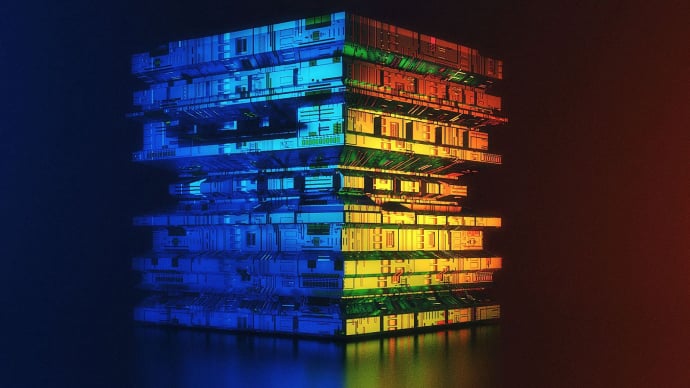




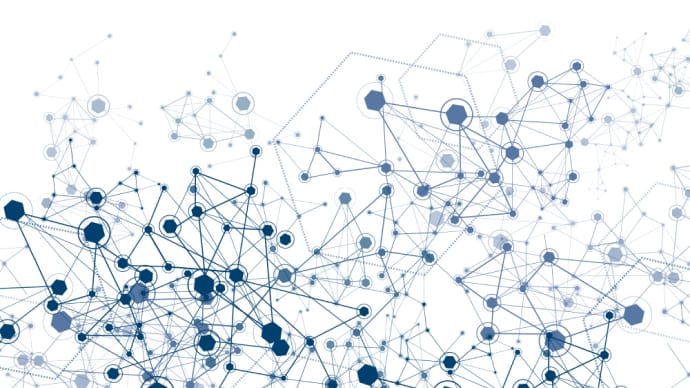

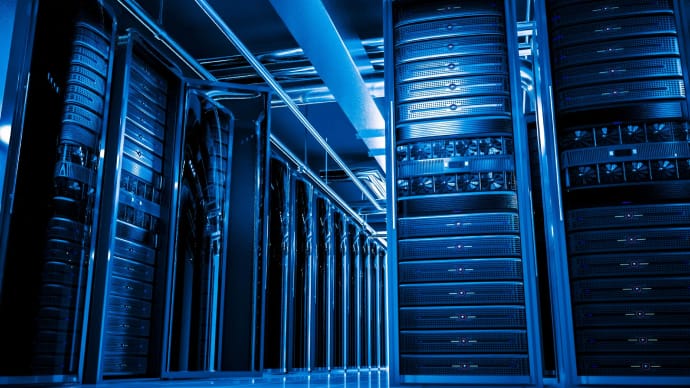

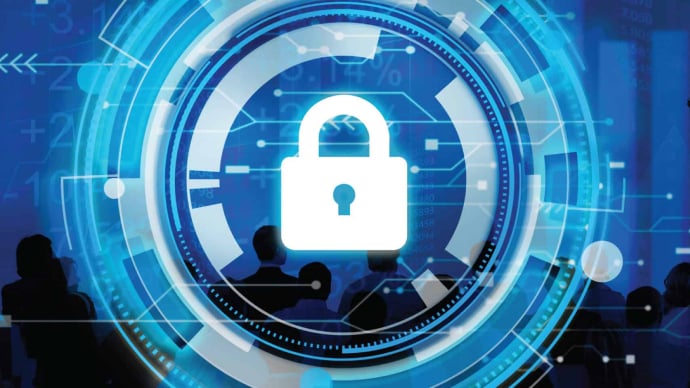
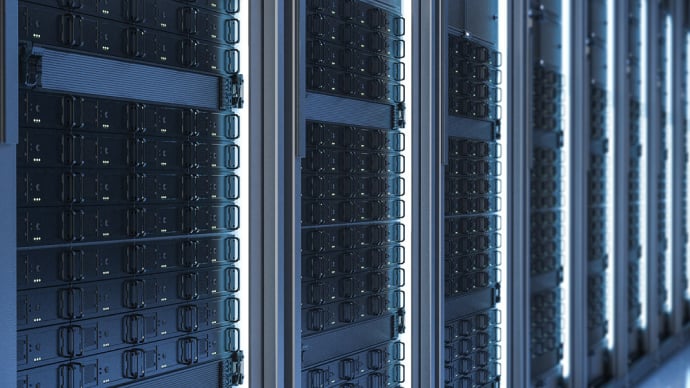








Only Registered Members can View Training Courses
Please fill out your email address below in order to view Training Courses. Registration is Free and Easy, You Simply need to provide an email address.
- Trusted by 1.2M IT Certification Candidates Every Month
- Hundreds Hours of Videos
- Instant download After Registration






